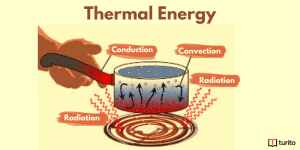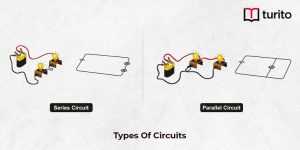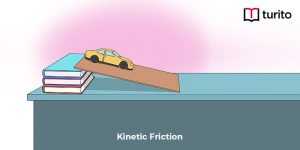Van De Graaff Generator
Van de Graaff generator, an electrostatic generator created by an American physicist Robert. It functions by charging a hollow metal globe-shaped gadget that is perched atop an insulating column using a rotating (moving) belt. Thereby producing an extremely high electric potential of a few million volts. Accelerating charged particles produces a very strong electric field.
Definition: Van de Graaff Generator
A Van de Graaff generator can be defined as an electrostatic generator that generates extremely high electric potentials by accumulating electric charge on a hollow metal globe on top of an insulated column using a moving belt. At low current levels, it generates direct current (DC) electricity at very high voltages.
Modern Van de Graaff generators have a potential difference of up to 5 megavolts. The model can generate roughly 100 kV and store enough power to cause audible electric sparks. Larger Van de Graaff machines are on site in some scientific museums; smaller ones are created for enjoyment and physics education to explain electrostatics.
As a result of the Van de Graaff generator’s remarkable potential for accelerating subatomic particles to extremely high speeds in an evacuated tube was initially created as a particle accelerator for physics study. Before the invention of the cyclotron in the 1930s, it was the most potent type of accelerator. Van de Graaff generators are commonly used as accelerators to produce intense particle and X-ray radiation for nuclear medicine and research.
Arcing and corona discharge restrict the voltage generated by an open-air Van de Graaff machine to roughly 5 MV. Most contemporary industrial machinery is housed in pressurized tanks filled with an insulating gas that allows for potentials up to roughly 25 MV.
How does Van De Graaff Generator Works?
Static electricity serves as the only operating principle for the Van De Graaff generator. As we all know, all matter is composed of atoms, which are further divided into protons, neutrons, and electrons.
Protons are thought to be positively charged, whereas electrons are thought to have a negative charge. The matter is regarded as neutrally charged when both the quantity of protons and electrons stays constant. The proportion of electrons to protons is greater in negatively charged materials than in positively charged matter. Electrons can move between different types of substances or matter.
Based on the triboelectric characteristics of two materials, an electron flow may occur when they are rubbed together. The substance that sheds electrons will become positively charged due to the transfer, whereas the material that got electrons will become negatively charged. That’s how static electricity is produced.
Static electricity is generated using a Van de Graaff generator. A Van de Graaff generator’s constant current is accompanied by variable voltage depending on the supplied load. The components of a very basic Van de Graaff generator are as follows:
- A motor
- Insulated belt
- Two Rollers
- The metal sphere as the output terminal
- Two Brush assemblies
The motor must rotate the belt around two rollers at a steady speed. The material used to construct the lower roller has a greater triboelectric characteristic. Electrons are collected from the insulated belt onto the bottom roller as the motor begins rotating the belt around it. The charge gradually concentrates more and more on the roller.
This charge concentration event repels the electrons at the brush assembly’s tips. The air molecules here between the bottom roller and brush assembly begin to attract electrons as well.
This phenomenon results in the positively charged air molecules transported on the belt from the negatively charged roller. As a result, the belt receives a positive charge and travels in the direction of the upper rollers.
Due to its construction or covering of material from a higher position in the triboelectric series, such as nylon, the top roller tries to resist the positive charge on the belt. The top brush reaches the upper roller and belt at one end and is directly attached to the interior of the output node or sphere.
The positive charges on the belt draw the electrons into the brush. Air particles dissolve there too, and the liberated electrons travel in the direction of the belt. The sphere absorbs the entire charge, and any extra charge is dispersed outside the sphere or terminal output.
This straightforward electrostatic action enables the Van De Graaff generator to produce high voltages continuously.
Working Principle of Van de Graaff Generator
Consider a big R-radius spherical shell. The electric field inside such a sphere would be equal to zero if a charge of magnitude Q is applied to it; however, the electric field beyond the sphere will be caused by the charge Q applied to the sphere’s center.
Therefore, the potential within is constant, and the potential beyond is that of a point charge, namely that the amount at the radius R. Thus, we have:
Potential within a conductive spherical shell of radius R with charge Q = constant, determined by,
Place a smaller sphere in the center of the bigger one, with r being its radius and q being the charge on its surface. At various sites in the system, the potential energy resulting from the reduced surface can be expressed as the following values:
On the small sphere’s surface:

When looking at the big R-radius spherical shell:

If we consider the total charges in the system, the potential energy attributable to the system of charges can be expressed as q and Q.

The inner sphere always has a higher potential and is unaffected by the charge Q that builds up on the bigger surface, presuming that q is positive. The number V(r)-V(R) represents a positive potential difference. Therefore, the difference is neutralized because the potential caused by Q is constant up to radius R.
No matter how small, the charge q on the smaller sphere is transmitted to the bigger sphere if a conducting wire connects the smaller and larger spheres. Here, as demonstrated in the system, the charge on the bigger sphere keeps growing if we insert a small charged sphere into the bigger spherical shell.
Similar to the smaller sphere, when the charge grows, the potential there would also rise until the disintegration field of air is achieved. A similar idea underlies how the Van de Graaff generator operates.
Uses of Van de Graaff Generators
Van De Graaff generators are primarily used in education nowadays to illustrate the theoretical and practical elements of the electrostatic behavior of particles. The Van De Graaff generators are primarily employed in physics laboratories for illustration purposes as particle accelerators.
However, before developing more effective ways to accelerate particles, Van de Graaff generators were one of the earliest techniques to research nuclear physics.
Van De Graaff generators represent a crucial turning point in the history of nuclear physics particle studies, despite their limited employment in the modern world.
Particle Accelerators:
- Particle Smashers are another name for these accelerators. The generator’s high energy source accelerates the subatomic particles in an evacuation tube until they collide with atoms.
- The foundation of particles is the ability to produce these high-energy collisions, which are used to accelerate protons, ions, and electrons required for various nuclear physics studies.
- The Van de Graaff generators are accelerators to produce X-Ray beams for nuclear medicine and research.
Science instruction: Van de Graaff generators teach electrostatics in physics classes.
Sterilizing food: Accelerating electrons are used to sterilize food and process other things.
Conclusion
Robert Jemison Van de Graaff created the Van de Graaff Generator in 1929. A Van de Graaff Generator is a tool for creating potential differences that are hundreds of millions of times higher than normal (as high as 20 million volts). The Van de Graaff Generator now produces a potential difference of 5 Megavolts.
If we touched the sphere of this generator while seated on an insulated platform, the charge from the sphere would go down our bodies and into our hair. Since our hairs would emit the same charge, the charges would repel one another. Van de Graaff generators are electrostatic devices with “constant current”. While the current stays constant, the voltage changes due to adding a load to a Van de Graaff generator.
Frequently Asked Questions
1. What is the use of Van de Graaff generators?
The Van de Graaff generator’s high potential allows it to be utilized as an accelerator for subatomic particles in an evacuated tube, which is why it was first created for physics study. Before the invention of the cyclotron in the early 1930s, it was the most potent type of accelerator.
2. How does a Van de Graaff generator work?
The Van De Graaff Generator is essentially a high-voltage electrostatic generator. A regular Van De Graaff generator comprises an insulating belt that carries the electrical charge to the terminal. A high-voltage DC supply is used to generate the charges that are transmitted to the belt. These charges are accumulated and transferred to the terminal’s outside surface.
3. Describe the Van de Graaff generator functions.
In many research labs, Van de Graaff generators are a common sight. To many people, it is a machine that resembles a huge metal ball on a pedestal and can make the hair stand on end. The Van De Graff generators do more than only produce a static charge.
High potential differences of 5 Mega Volts can be produced using a Van De Graaff generator. The produced charges are typically utilized to accelerate particles like ions in scientific research.

Relevant Articles
Understanding Thermal Energy: What It Is and How It Works
Thermal energy is essential to our daily lives, from warming …
Understanding Thermal Energy: What It Is and How It Works Read More »
Read More >>Avogadro’s Number: Meaning, Importance, and More
Introduction The concept of measuring the microscopic particles that make …
Avogadro’s Number: Meaning, Importance, and More Read More »
Read More >>Kinetic Friction – Definition, Laws, Types
Kinetic Friction Kinetic force is a force acting between two …
Kinetic Friction – Definition, Laws, Types Read More »
Read More >>




















Comments: